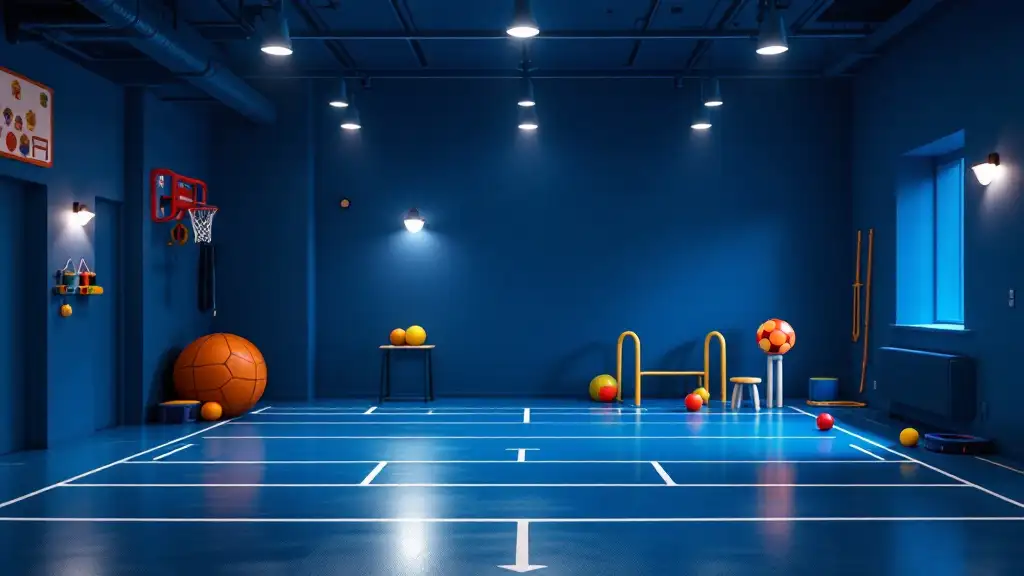
The Importance of Structured Bedtime Routines for Individuals with Developmental Disabilities
Establishing reliable and soothing bedtime routines can significantly improve sleep quality and overall wellbeing for individuals with developmental disabilities. The Division of Developmental Disabilities (DDD) plays a vital role in supporting families through resources, tailored strategies, and community engagement, helping to create environments conducive to restful sleep and daily stability.
Resources and Services Offered by DDD for Bedtime Routine Development
 The Department of Developmental Disabilities (DDD) offers a variety of programs and services aimed at supporting individuals with developmental disabilities in establishing effective bedtime routines. These resources are grounded in scientific research and tailored to meet individual needs.
The Department of Developmental Disabilities (DDD) offers a variety of programs and services aimed at supporting individuals with developmental disabilities in establishing effective bedtime routines. These resources are grounded in scientific research and tailored to meet individual needs.
One of the main approaches involves evidence-based sleep strategies. These include environmental modifications, such as creating a calming sleeping environment, and relaxation techniques like gentle music or calming activities that help individuals wind down. Sleep interventions may also incorporate medication or supplements like melatonin, depending on the person's specific needs.
In addition to personalized strategies, DDD promotes access to specialized programs such as the BNBD-NDD online behavioral sleep intervention. This program provides caregivers with practical, step-by-step guidance to implement effective sleep routines and address sleep disturbances.
Utilizing Medicaid waivers and individualized support plans (ISPs) allows for further customization of routines. These plans help coordinate services across multiple disciplines to develop tailored daily routines that incorporate sleep, leisure, and community engagement. The involvement of multidisciplinary teams—including speech therapists, behavior analysts, and healthcare providers—ensures a holistic approach to support.
Family participation remains central to successful routine development. DDD emphasizes caregiver training and community resource integration to foster consistency at home. Support from family members, like siblings or caregivers, complements formal services, creating a nurturing environment that promotes better sleep and overall well-being.
Overall, DDD's resources and services facilitate a comprehensive, personalized approach that can significantly improve sleep quality and enhance quality of life for individuals with developmental disabilities.
| Resource/Service | Purpose | Additional Details |
|---|---|---|
| Evidence-based sleep strategies | Improve sleep hygiene | Environmental modifications, relaxation, melatonin |
| BNBD-NDD online program | Guide behavioral sleep routines | Practical online guidance for caregivers |
| Medicaid waivers & ISPs | Customize routines | Tailored support plans to fit individual needs |
| Multidisciplinary team | Holistic support | Coordination among healthcare and behavioral specialists |
| Family & community resources | Support at home & social engagement | Sibling involvement, community activities |
This multi-faceted support system ensures that individuals with developmental disabilities receive consistent, effective help in developing routines that promote restful sleep and overall health.
DDD’s Role in Supporting Families with Sleep and Daily Routine Management
 The Division of Developmental Disabilities (DDD) plays an essential role in assisting families to manage the daily needs and sleep routines of individuals with developmental disabilities like Jose. Through customized services, DDD offers valuable resources such as day treatment, attendant care, speech therapy, and respite care, all designed to enhance overall wellbeing.
The Division of Developmental Disabilities (DDD) plays an essential role in assisting families to manage the daily needs and sleep routines of individuals with developmental disabilities like Jose. Through customized services, DDD offers valuable resources such as day treatment, attendant care, speech therapy, and respite care, all designed to enhance overall wellbeing.
A significant aspect of DDD’s support involves educating families and caregivers on sleep hygiene and applying evidence-based practices. Understanding that sleep issues are common among those with neurodevelopmental conditions, DDD facilitates training for healthcare providers and caregivers. This training focuses on behavioral and environmental strategies proven to improve sleep quality.
Promoting consistent daily routines is another critical aspect. DDD emphasizes establishing predictable habits around hygiene, nutrition, and communication. Such routines help stabilize sleep patterns and foster emotional regulation, leading to better day-to-day functioning.
Frameworks for emotional support and daily management, including calming activities like music and routines such as calm car rides, are tailored to individual preferences. For example, Jose finds comfort in music and calming activities, which highlights the importance of personalized routines.
Overall, DDD’s comprehensive approach supports not just better sleep, but also enhances emotional health and participation in community life, ultimately enriching the quality of life for individuals with developmental disabilities and their families.
| Service Type | Focus Area | Additional Details |
|---|---|---|
| Tailored Services | Sleep & Routines | Customized care plans for individual needs |
| Educational Programs | Sleep Hygiene | Evidence-based practices for caregivers |
| Training Initiatives | Caregiver & Provider | Behavioral and environmental interventions |
| Routine Development | Consistent Habits | Hygiene, nutrition, communication |
| Emotional Support | Calming Activities | Music, car rides, sensory routines |
Integrating Support Services into Bedtime Routine Planning
 When planning bedtime routines for individuals with intellectual and developmental disabilities (IDD), such as Jose, it’s essential to integrate various support services thoughtfully.
When planning bedtime routines for individuals with intellectual and developmental disabilities (IDD), such as Jose, it’s essential to integrate various support services thoughtfully.
Collaboration with healthcare professionals, including behavioral specialists, therapists, and support staff, is vital. These experts can help families develop personalized strategies that cater to the individual's unique needs and preferences. For Jose, who benefits from speech therapy and sensory activities, this collaboration ensures the bedtime routine remains supportive and effective.
Creating sensory-friendly environments is another practical step. Soft lighting, comfortable bedding, and sensory tools like weighted blankets or stress balls can promote relaxation. For Jose, calming activities like music or gentle stretching before bed help soothe him, demonstrating how tactile and auditory stimuli can be part of a successful routine.
Using visual supports such as schedules and social stories can prepare individuals for bedtime, easing anxiety and fostering independence. Visual timetables showing the steps of the routine help Jose understand what to expect, reducing uncertainty and stress.
Incorporating calming pre-bedtime activities, like listening to soothing music or engaging in slow stretches, helps signal the body that it’s time to wind down. Repetitive, enjoyable routines create positive associations with bedtime.
Ongoing communication with professionals allows families to monitor sleep patterns and address any challenges promptly. Regular assessment ensures that routines remain matched to the individual's evolving needs.
By combining these approaches—professional collaboration, sensory accommodations, visual supports, calming activities, and regular evaluation—families can create bedtime routines that support restful sleep and promote overall well-being for loved ones with disabilities.
The Vital Bond: Family Involvement in Bedtime Routine Success

Family participation and emotional support
Jose's story highlights how involvement from family members can greatly enhance the well-being of individuals with disabilities. His sister Maria plays an essential role, accompanying him to day programs and helping with transportation. This consistent support provides Jose with emotional comfort and stability.
Role of siblings and caregivers in routine consistency
Maria’s active participation ensures that routines like bedtime are predictable and comforting. Her presence not only aids Jose in developing a sense of security but also helps in maintaining consistency which is crucial for his emotional regulation.
Impact of family routines on emotional regulation and social skills
Structured routines facilitated by family support contribute to better emotional regulation in individuals with intellectual disabilities. Engaging in enjoyable and familiar activities, like listening to calming music or car rides, helps soothe Jose and foster social engagement.
Celebrating small successes in routine implementation
Recognizing and celebrating small wins, such as Jose settling calmly during a music session or a car ride, boosts confidence for both Jose and his family. These positive moments reinforce routines and deepen the family bond, creating a supportive environment for his growth.
Community and Physical Activity as Support Pillars

Benefits of community engagement and social activities
Participation in community-based activities plays a vital role in enriching the lives of individuals with intellectual disabilities. For Jose, attending day treatment programs and social outings helps him develop social skills and fosters a sense of belonging. Maria’s involvement in his care, including accompanying him to the day treatment activities and providing transportation, makes these experiences more accessible and enjoyable for him.
Physical exercise to improve sleep and health
Engaging in physical activities, such as walks or gentle exercises, can improve sleep quality and overall health. For Jose, calming activities like car rides serve as a soothing routine that reduces anxiety and promotes restful sleep, illustrating the importance of personalized approaches to activity.
Evidence from NIH studies on community participation benefits
Studies from the National Institutes of Health (NIH) emphasize the positive impact of community engagement on mental and physical health for individuals with intellectual disabilities. These activities support social interaction, physical fitness, and emotional well-being, helping to enhance daily functioning.
Accessible activities suitable for individuals with intellectual disabilities
Choosing activities that are both accessible and enjoyable is essential. Music sessions, calm outings, and routine routines like car rides that Jose favors are excellent examples. They promote relaxation, improve mood, and provide opportunities for skill development.
Enhancement of quality of life through enjoyable routines
Regular participation in enjoyable and manageable routines helps bring stability and happiness. For Jose, routines that include a mix of community involvement and calming activities significantly contribute to his overall well-being and happiness.
| Aspect | Description | Benefits |
|---|---|---|
| Community Engagement | Participation in social and community activities | Social skills, belonging, skill development |
| Physical Activity | Exercises, walks, calming rides | Better sleep, health, relaxation |
| Personalized Routines | Activities tailored to preferences | Emotional stability, calmness |
| Support System | Family involvement, support services | Enhanced social connections, care quality |
By integrating community engagement, physical activity, and personalized routines, individuals like Jose can experience a more fulfilling, balanced life that nurtures both their physical and emotional health.
Fostering a Supportive Environment for Restful Sleep and Healthy Routines
Through dedicated resources, personalized strategies, community engagement, and family involvement, DDD helps families establish effective and meaningful bedtime routines. These routines not only promote better sleep but also support emotional well-being and daily functioning for individuals with developmental disabilities. With the right support, families can create a structured, calming environment that enhances quality of life and fosters independence.
References
- How a Caring Family and the Bond Between Siblings Helps a DDD ...
- Sleep Challenges in Developmental Disabilities - AIDE Canada
- [PDF] INDIVIDUAL SERVICE PLAN DEVELOPMENT AND ...
- [PDF] A Guide for Adolescents and Young Adults with Intellectual ... - DHHS
- How a Caring Family and the Bond Between Siblings Helps a DDD ...
- Benefits of a bedtime routine in young children: Sleep, development ...
- Sleep Hygiene for Children With Neurodevelopmental Disabilities
- Family management of common sleep disturbances among children ...
- Bedtime Strategies for Children with Special Needs












